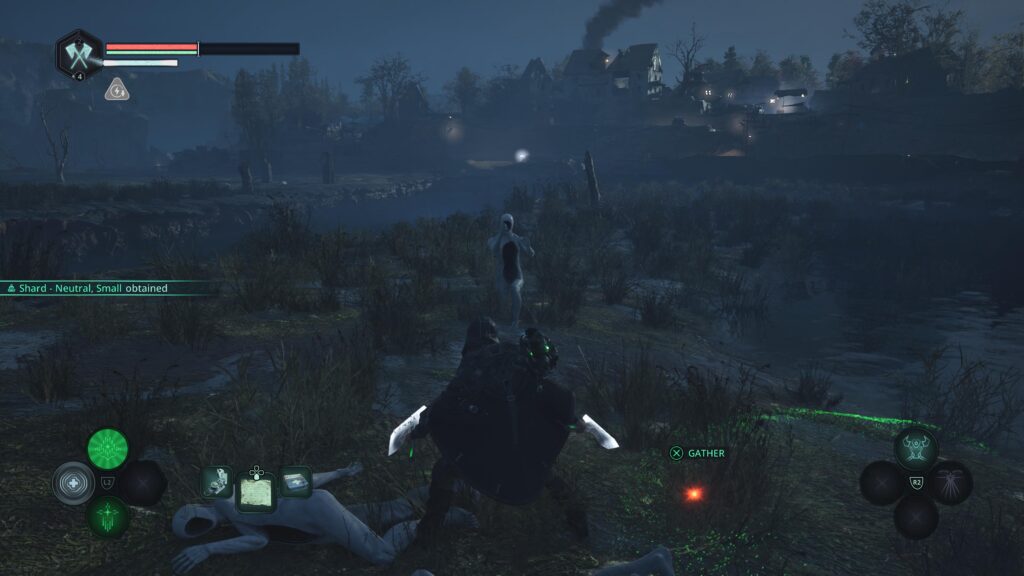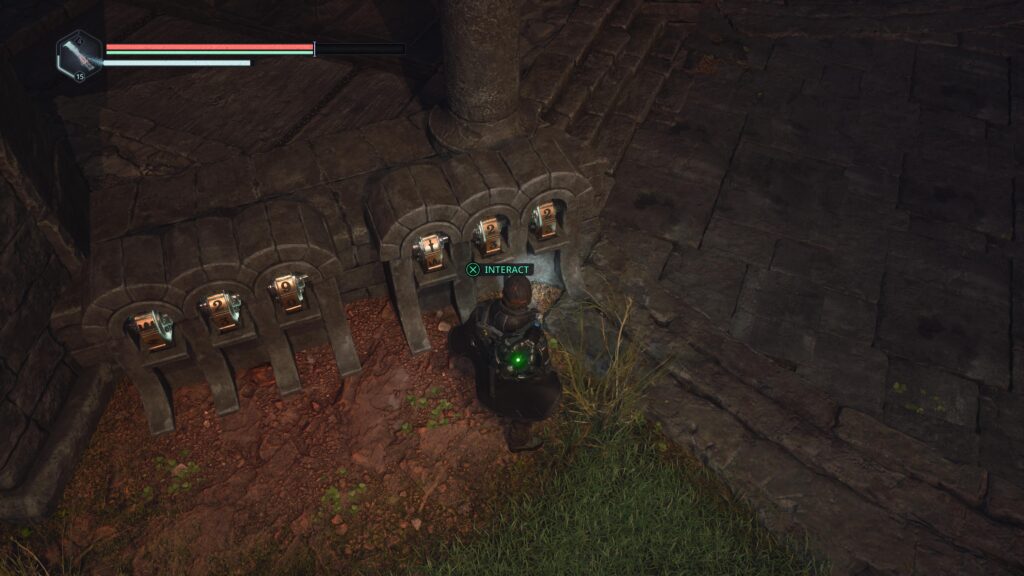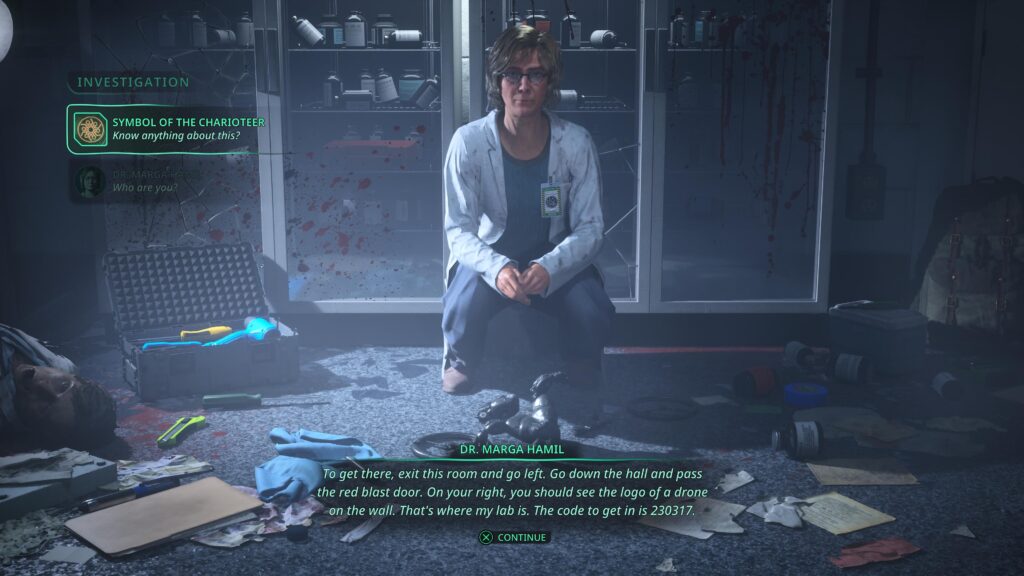Hell is Us, developed by Rogue Factor and published by Nacon, is one of those rare games that isn’t afraid to trust the player. Led by industry veteran Jonathan Jacques-Belletête—best known for his work on Deus Ex: Human Revolution—this third-person action-adventure drops you into a strange, war-torn country and simply asks: are you paying attention? Instead of filling the screen with markers and checklists, Hell is Us makes you listen, observe, and think—like the best ’90s point-and-click adventures once did. If that sounds intriguing, it should. From its unconventional storytelling to its tense melee combat and haunting world design, a lot is waiting just beneath the surface.
Welcome to Hadea
The story of Hell is Us unfolds in Hadea, a fictional country ravaged by civil war and closed off from the rest of the world. You play as Remi, a peacekeeper with a haunted past who returns to the land of his birth searching for answers—and maybe a bit of redemption. The game quickly reveals that Hadea is more than just a war-torn country. It’s a place haunted by the supernatural phenomenon known as The Calamity, which has unleashed strange, misshapen creatures known as Hollow Walkers.
From the first steps in Senedra Forest, the game sets the tone. There’s no overbearing tutorial. No glowing arrows. No objective markers. Instead, Hell is Us trusts you to listen to dialogue, study the environment, and piece together your next move. It’s bold and refreshing. Senedra introduces the basics—your PDA, first combat encounter, early NPCs, and even key story clues—but it never feels like a “starter zone.” Later, when you’re trudging through the Acasa Marshes toward the ruined village of Jova, you’ll start connecting dots you didn’t even know you missed.
By the time you reach Vyssa Hills and Lake Cynon, the world has opened up, both narratively and mechanically. Along the way, you’ll meet allies like Victor Gaz (the blacksmith’s apprentice and weapon-upgrader), Gildas Brom (giving rewards for good deeds done and closing timeloops), and the journalist Tania, whose lore knowledge adds texture to the world. It’s not a lonely game but one that refuses to hold your hand.
Player-Plattering
At the heart of Hell is Us lies Rogue Factor’s “player-plattering” philosophy: a bold design approach that hands the reins back to the player. Instead of flooding you with waypoints or glowing trails, the game invites exploration through sharp observation and genuine curiosity. There’s no minimap or obvious guidance. Clues are buried in dialogue and hidden in the soundscape. It’s on you to listen, look, and piece things together. And when it clicks, it truly feels earned.
And it works. There were multiple moments where I had to pull out my phone and jot down observations or codes—something I haven’t done in a game in years. The in-game PDA is helpful, but old habits die hard, and I found myself rediscovering the joy of being stuck, thinking it over, and then feeling that glorious “aha!” when the solution clicked. I sincerely hope more developers take inspiration from this.
Soulslike – like…
Combat in Hell is Us was a slower burn for me. I’m not a huge fan of soulslike combat, and while this isn’t quite that, it flirts with the genre’s mechanics. Hollow Walkers are relentless, and the stamina-health hybrid system demands patience and precision. The key to surviving lies in mastering the Lymbic Pulse—a mechanic that lets you regain health mid-fight by landing unbroken strings of attacks. It’s risk-versus-reward, and it rewards calm, deliberate play.
At first, I struggled. But like everything else in the game, it started to click. I began recognising enemy patterns, nailing my dodges, and parrying at just the right time to create openings. The game’s four weapon types (twin axes, one-handed swords, two-handed swords, and polearms) let you find your own combat rhythm, and glyph upgrades provide satisfying customisation. Enemy variety and regional difficulty spikes keep things fresh, even dozens of encounters later.
Your drone companion, KAPI, adds flair to the fights, offering special moves depending on the modules you equip. From aerial strikes to enemy distractions, it’s a flexible and fun system that adds some welcome dynamism.
Grim and Gorgeous
Visually, Hell is Us nails its tone from the first frame. The atmosphere is heavy and often grim, but always captivating. Each location is not only distinct but deeply considered. From the haunted forests of Senedra to the desolate marshes of Acasa, every area tells a story through smart environmental design. Remi’s animations in battle feel grounded and deliberate, echoing the tension in every encounter. The lighting, environmental effects, and colour palettes shift meaningfully from region to region, giving each space its own mood and rhythm. Backing this up is a carefully restrained soundscape. The soundtrack leans into brooding, tense melodies that elevate the atmosphere without ever overpowering it. Dialogue is minimal, but when it’s there, it lands perfectly, carrying weight in both delivery and timing.
Conclusion
Few games challenge the status quo as confidently as Hell is Us, and I found myself fully immersed in its vision and execution. In a time when so many games feel afraid to let players think for themselves, this one demands it. It takes bold swings in its design, its storytelling, and its philosophy, and remarkably, it lands every one of them. The satisfaction I felt solving its puzzles, discovering its secrets, and unravelling its story far surpassed what I’ve experienced in most modern games. It’s not often a perfect score is given, but Hell is Us earns it. For its brave design, for trusting the player, and for delivering one of the most memorable adventures I’ve played in years, it gets my highest recommendation.





